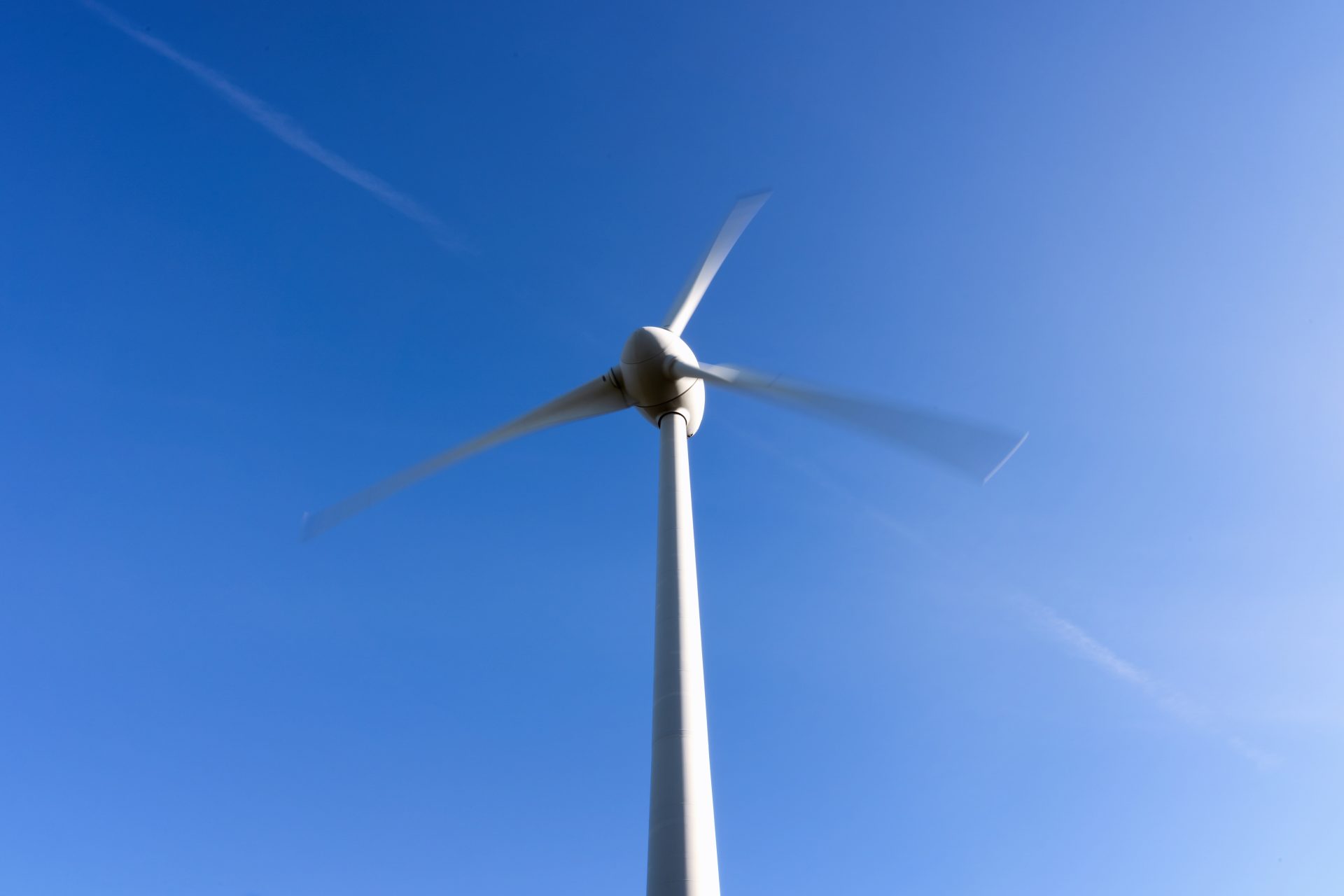
Glyndebourne and the environment
Find out how we’re working to reduce our environmental impact, including using our very own wind turbine.
– Gus Christie, Executive Chairman of Glyndebourne
At Glyndebourne we are committed to being industry leaders in minimising both our direct and indirect impact on the environment, and encouraging everyone we engage with to do the same. In 2021, in conjunction with COP26, Glyndebourne joined the global Race to Zero and committed to:
- Halving direct carbon emissions (from a 2019 baseline) by 2030
- Reaching net zero by 2050
- Reporting annually on progress
You can read on to find out how we’re planning to reach those targets and watch this short video to learn more about our environmental initiatives:
The Glyndebourne wind turbine

The biggest step we’ve taken was the installation of a 67-metre wind turbine a short distance from the opera house. Our Enercon E44 wind turbine has a highly efficient design, which allows it to generate more energy per unit of wind compared to some other turbines.
The turbine was launched in January 2012 by Sir David Attenborough and between 2012 and 2023 it has generated the equivalent of 102% of the electricity used by the company in the same period. On launch it reduced our carbon emissions by 50%.
The wind turbine directly reduces our environmental footprint by electricity generation. It also provides a visual reminder to us all to do all we can to tackle climate change.
What we do to reduce our environmental impact
The turbine has been the single biggest action undertaken by Glyndebourne – but it’s just one part of our ongoing efforts.
In the drive to achieve our targets of halving direct carbon emissions by 2030 and reaching net zero by 2050, Glyndebourne is taking a two-step approach. In 2023 we will continue to reduce gross carbon emissions and also invest an additional £25 per tonne of our net Scope 1 and 2 emissions from 2022 into new emission-reduction measures at Glyndebourne.
Action that we’ve already taken includes:
- Installation of a 67-metre wind turbine that cut our carbon emissions by 50%
- Adoption of the baseline principles of the Theatre Green Book guidance on sustainable productions on all new shows since 2022
- Installation of new, more efficient gas boilers that we forecast could reduce our gas consumption by 20%
- A switch in energy providers so that Glyndebourne is running on 100% green energy since October 2021
- Phasing out bottled water so that by 2023 all water served at Glyndebourne will be drawn from our own natural spring
- Creation of a dye garden to grow plants that can be used to make natural dyes for use by the costume department
- A new waste management contract to make Glyndebourne zero waste to landfill since 2018
- Changes to the air conditioning system to lower energy consumption
- Recycling decommissioned scenery
- Switching to environmentally-friendly cleaning supplies
- Introducing a ‘green purchasing’ clause, committing to source from local suppliers where possible
- Replacing auditorium lights with low-energy LEDs and installing timers and light sensors
- Adjusting toilet flushes to save water
- Reusing 70% of garden waste for compost
- Installation of 36 on-site electric car charging facilities for staff and audiences
- Introduction of a ‘cycle to work’ scheme and an interest-free loan for staff commuting by public transport
The impact of these and other changes have been:
- 76% reduction in energy-related emissions between 2009 and 2023
- 86% reduction in water use between 2009 and 2023
- 97% reduction in absolute waste tonnage between 2009 and 2022, all of which is converted into energy with nothing going to landfill
To keep finding new ways to reduce our environmental impact, Glyndebourne took part in the Spotlight Programme, developed by Arts Council England and Julie’s Bicycle.
Our environmental awards














